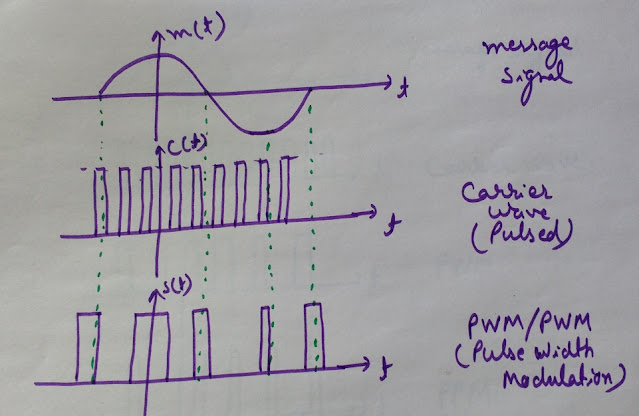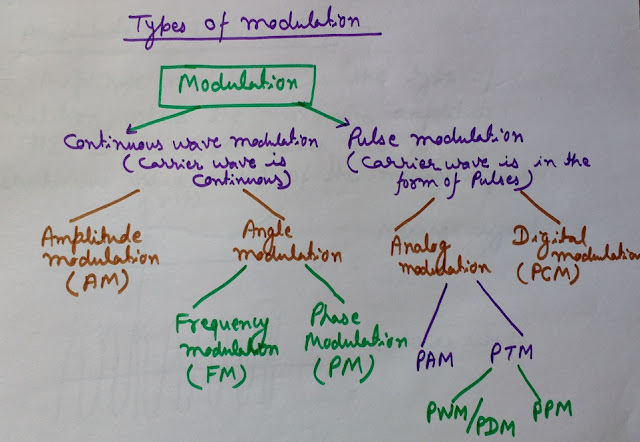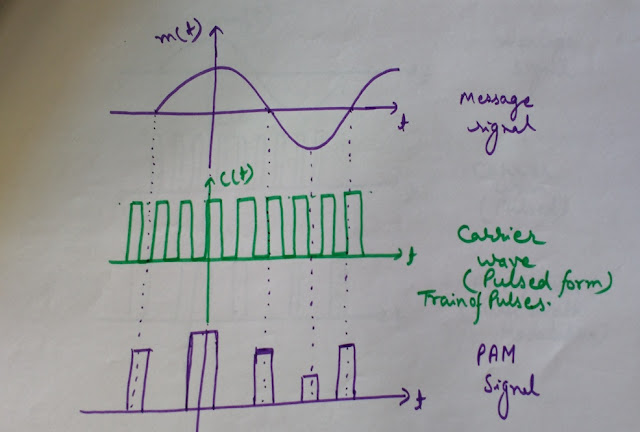Here we will understand what is a Ring Modulator along with Where and Why the Ring Modulator is used? The structure and working of the ring modulator has been explained here with the help of beautiful circuit simulation software (Falstad Circuit Simulator).
Ring modulation is the implementation of frequency mixing. It is performed by multiplying two signals. One signal is a simple waveform (typically a sine wave) and another signal is the signal that we want to modulate.
The ring modulator heterodynes (frequency mix) two waveforms. The output is the sum and difference of the frequencies that are present in each waveform.
What is Ring Modulator (Ring Modulation)
A Ring modulator is an electronic device that is used for ring modulation.Ring modulation is the implementation of frequency mixing. It is performed by multiplying two signals. One signal is a simple waveform (typically a sine wave) and another signal is the signal that we want to modulate.
Where and Why Ring Modulator is used
Ring modulator can be used to generate double sideband suppressed carrier (DSB SC) wave. DSB SC is a type of amplitude modulation where in the modulated wave contains only two side bands and the carrier wave is suppressed.Why it is called Ring Modulator
The ring modulator circuit implements diodes in clockwise or anticlockwise arrangement. Hence it takes the shape of a ring. That's why it is called as the ring modulator.Ring Modulator Applications
A ring modulator finds applications in music synthesizer or as an effects unit.The ring modulator heterodynes (frequency mix) two waveforms. The output is the sum and difference of the frequencies that are present in each waveform.
Ring Modulator | Construction and Working (Generation of DSB SC using Ring Modulator) | AM Generation Simulation
Attributes: https://www.falstad.com/circuit/
Go To HOME Page
See More Simulations Here-
Resistors in Series Experiment (Electronic Circuit Simulator) [HD]
Resistors in Parallel (Theory and Simulation using Circuit Simulator) [HD]
Ohm's Law Animation and Simulation (Experiment and Theory with electronic Simulator) [HD]
Thevenin Theorem - Thevenin Equivalent Circuit - Applications and Limitations of Thevenin Theorem
Oscillator- Oscillators in Electronics- Colpitts, Hartley, LC, Crystal Oscillator- Circuit Animation
Series Resonance and Parallel Resonance - Resonance Circuit (Animation and Circuit Simulator)
Passive Filters- Low Pass Filter, High Pass Filter, Band Pass Filter, Notch filter (Band Reject)
Butterworth Filter-Low Pass, High Pass and Bandpass Filters-Active Filters-Op Amp Filters Animation
Flip Flops - SR Flip Flop, JK Flip Flop, D Flip Flop & Master Slave Flip Flop (Circuit Simulator)
555 Timer Circuits - 555 Timer Applications - 555 Timer IC (Online Circuit Simulator)
Phase Locked Loop- Type l PLL & Type ll PLL, Frequency Multiplier, Phase Comparator & Phase Detector
Transformers- Step Up Transformer & Step Down Transformer- DC Transformer- Power Transmission [HD]
Curta Calculator/Curta Calculator Design, How To Use and How It Works (Curta Calculator Animation)
Honda CBX 1000 Engine Animation/CBX Clutch/Honda CBX/CBX 1000
IC 741 Internal Circuit & Working, Applications (Inverting Amplifier, Slew Rate & Current Limits)
Silicon Controlled Rectifier (SCR) / Thyristor - SCR Construction and Working- Power Electronics
Analog to Digital Converter (ADC) - Flash ADC (Parallel Comparator), Delta Sigma ADC, Half Flash ADC
Transmission Lines - Standing Waves, Termination, Impedance Matching, Mismatched Lines, Stub Frequency
Differential Amplifier (Differential Inputs, Common Mode Input, Common Mode Current Source (OP AMP)
AM Detection - AM Detector Circuit - Demodulation of AM (Envelope Detector) [AM Detector Simulation]
Multivibrators - Astable Multivibrator, Monostable Multivibrator, Bistable Multivibrator/ Simulation
Ring Modulator - Construction and Working (Generation of DSB SC using Ring Modulator) -AM Generation
Rectifier - Half Wave Rectifier, Full Wave Rectifier/Active Rectifiers, Bridge Rectifier, AC to DC
Schmitt Trigger - Schmitt Trigger circuit - Applications, Waveforms & Simulation of Schmitt Trigger
Lissajous Patterns (Lissajous Figures or Lissajous Curve) - Lissajous Pattern on CRO (Simulation)



